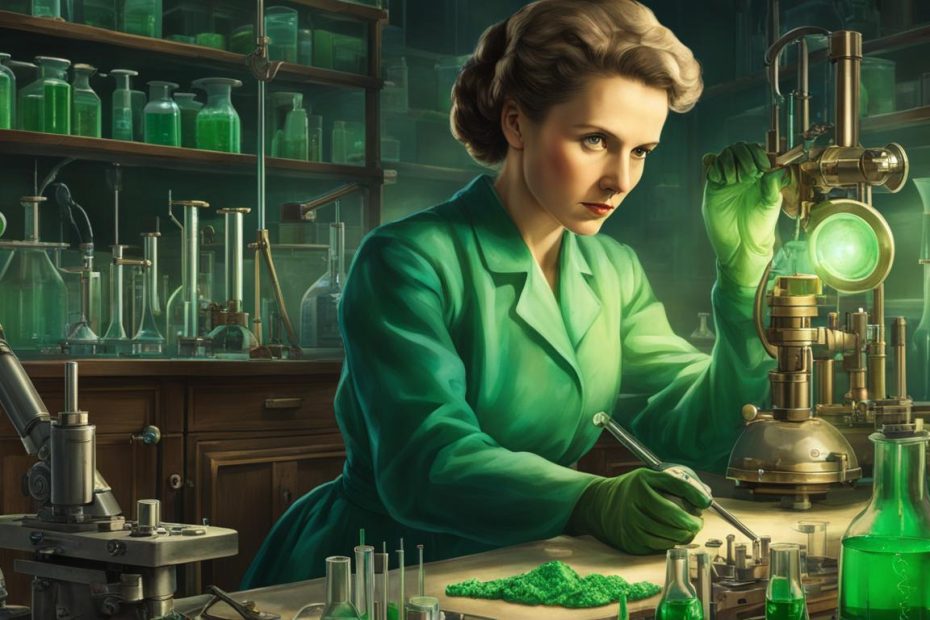From the genesis of the Nobel Prize in 1901 to the present year of 2023, the historical legacy of women who have been recognized for their extraordinary contributions is nothing short of inspiring. Within this exemplary sisterhood, 65 instances have celebrated the groundbreaking achievements of women, with the prestigious Nobel Prize or the Sveriges Riksbank Prize in Economic Sciences in Memory of Alfred Nobel honoring their monumental work. Significantly, among these distinguished woman Nobel laureates, Marie Curie shines as a symbol of relentless pursuit and intelligence, being honored not once, but twice, for her pioneering contributions to science.
Marie Curie: Pioneering the Field of Radioactivity
Standing prominently in the pantheon of great scientists, Marie Skłodowska-Curie blossomed within the competitive academia of her time to expand the horizons of scientific knowledge. As both a proficient physicist and chemist, she embedded her name indelibly into the historical bedrock of science.
Early Life and Academic Pursuits of Marie Curie
Born in the bustling city of Warsaw, future Nobel laureate Marie Curie embarked on a journey of academic excellence that would lead her to monumental discoveries. In 1891, the ambitious Curie moved to Paris and immersed herself in the fertile intellectual atmosphere of the University of Paris. Her tireless dedication to academics was reflected in her ability to achieve degrees in the challenging fields of physics, chemistry, and mathematics. It was here that her path converged with Pierre Curie, setting the stage for a partnership that would change the course of scientific history.
Marie Curie’s Groundbreaking Research and Discoveries
Amidst a climate of innovation, Marie Curie’s profound intuition led her to notice an anomaly within the mineral known as pitchblende. Its emission of radiation surpassed that of uranium alone, suggesting the presence of another element. Determined to decode nature’s secrets, Marie, alongside Pierre Curie, ground down tons of pitchblende, which culminated in the discovery of the elements polonium and radium. Charged with a natural penchant for discovery, Marie Curie’s relentless pursuit eventually resulted in the successful isolation of radium, a feat that pinned her name to an unprecedented scientific accomplishment.
Rewriting History: Marie Curie’s Nobel Prize Wins in Physics and Chemistry
Marie Curie’s remarkable journey saw her twice ascend to the pinnacle of scientific recognition: earning the Nobel Prize in Physics in 1903, and triumphantly securing the Nobel Prize in Chemistry in 1911. Initially, her pivotal role in their shared research on radioactivity was overlooked by the Nobel committee, but Pierre’s advocacy was instrumental in ensuring her contributions were officially honored. As the only individual to be rewarded with Nobel Prizes in both physics and chemistry, Marie Curie’s legacy stands unique and unchallenged. Her unyielding spirit propelled her work beyond the tragic passing of her husband, and she made visionary strides in the medical field with her development of mobile X-ray units during the warfare-torn years of World War I.
Marie Curie’s saga is a powerful testament to her enduring impact on radioactivity research and academic excellence. Her enduring contributions continue to inspire a legacy that not only illuminates the world of physics and chemistry but also lights the way for future generations of scholars and innovators in the realm of science.
First Woman Nobel Prize: Trailblazers Beyond Science
The landscape of Nobel Prize history extends far beyond the precincts of science, thanks to the formidable women laureates who have carved their niches in peace activism, literature, and economics. In the noble quest for peace, Baroness Bertha Sophie Felicita von Suttner, a dedicated pacifist and writer, blazed the trail by becoming the first woman to be awarded the Nobel Peace Prize in 1905. Her influential anti-war novel and her persuasive influence on Alfred Nobel himself were critical in the establishment of a prize dedicated to peace—a testament to the power of conviction and the written word in shaping global consciousness.
In the luminous realm of literature, women Nobel laureates like Selma Lagerlöf have enchanted the world with narratives that defy time and place. Lagerlöf, with her evocative storytelling, not only won the Nobel Prize but also captivated imaginations with tales as whimsical as a boy’s flight across Sweden on the back of a goose. In the field of Physiology or Medicine, Gerty Theresa Cori broke through the barriers in 1947, honored for her groundbreaking discovery in biochemistry related to the metabolism of glycogen, thereby illuminating new pathways of understanding in medical science.
To reflect the evolving landscape of the Nobel accolades, we must also turn our attention to the sphere of economics, where Elinor Ostrom’s 2009 recognition heralded a new era. She etched her name in history as the first woman to receive the Nobel in economic sciences, offering novel insights into the complexities of common property and resource management. These women laureates, from different walks of life and diverse specializations, stand shoulder to shoulder with the iconic Marie Curie as beacons of achievements, exemplifying the rich tapestry of women’s indispensable contributions on a worldwide stage.
